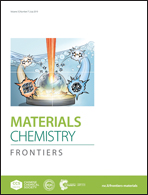Fabrication of superhydrophobic fabrics with outstanding self-healing performance in sunlight†
Abstract
Superhydrophobic fabrics with self-healing properties have drawn great attention in industry and daily life. Although many strategies have been reported for preparing superhydrophobic fabrics with self-healing properties, most of them require the usage of a large amount of organic solvents or fluoro-containing agents, which are harmful to the environment and human health. Furthermore, the healing process usually needs an extra heating equipment. However, the amount of vital agents (with low surface energy) loaded on fabrics is still not high enough, which greatly limits the self-healing times and long-term durability. Herein, we prepared superhydrophobic fabrics with outstanding self-healing properties by loading all-water-based octadecylamine@polydopamine core–shell nanospheres. The whole process is environmentally friendly, avoiding the use of harmful organic solvents or fluoro-containing agents. Significantly, due to the favourable photothermal ability of the polydopamine shell, the self-healing process could be realized in sunlight without additional heating treatments, making it more attractive. Moreover, the fabric could maintain superhydrophobicity even after 50 cycles of plasma and heating or 10 cycles of washing and heating treatments owing to the large octadecylamine core, which exhibited excellent durability. Our strategy may open a new avenue to obtain superhydrophobic fabrics with outstanding self-healing properties in sunlight for practical applications.



 Please wait while we load your content...
Please wait while we load your content...